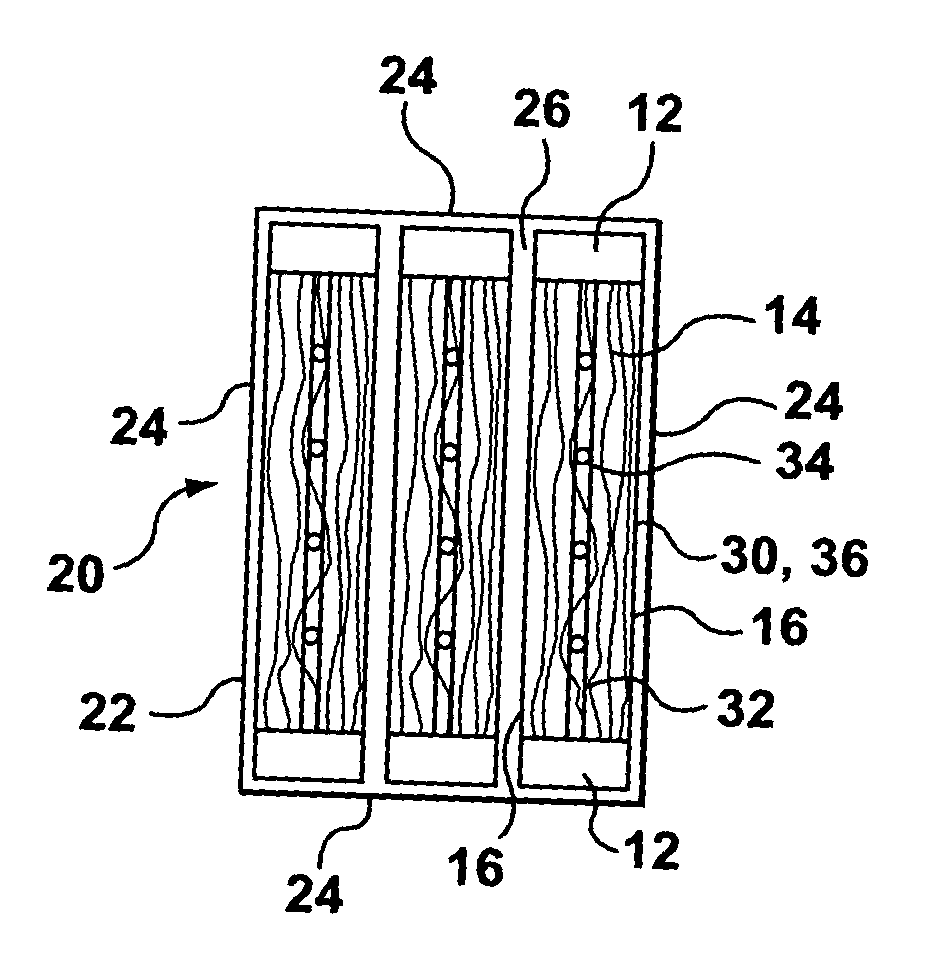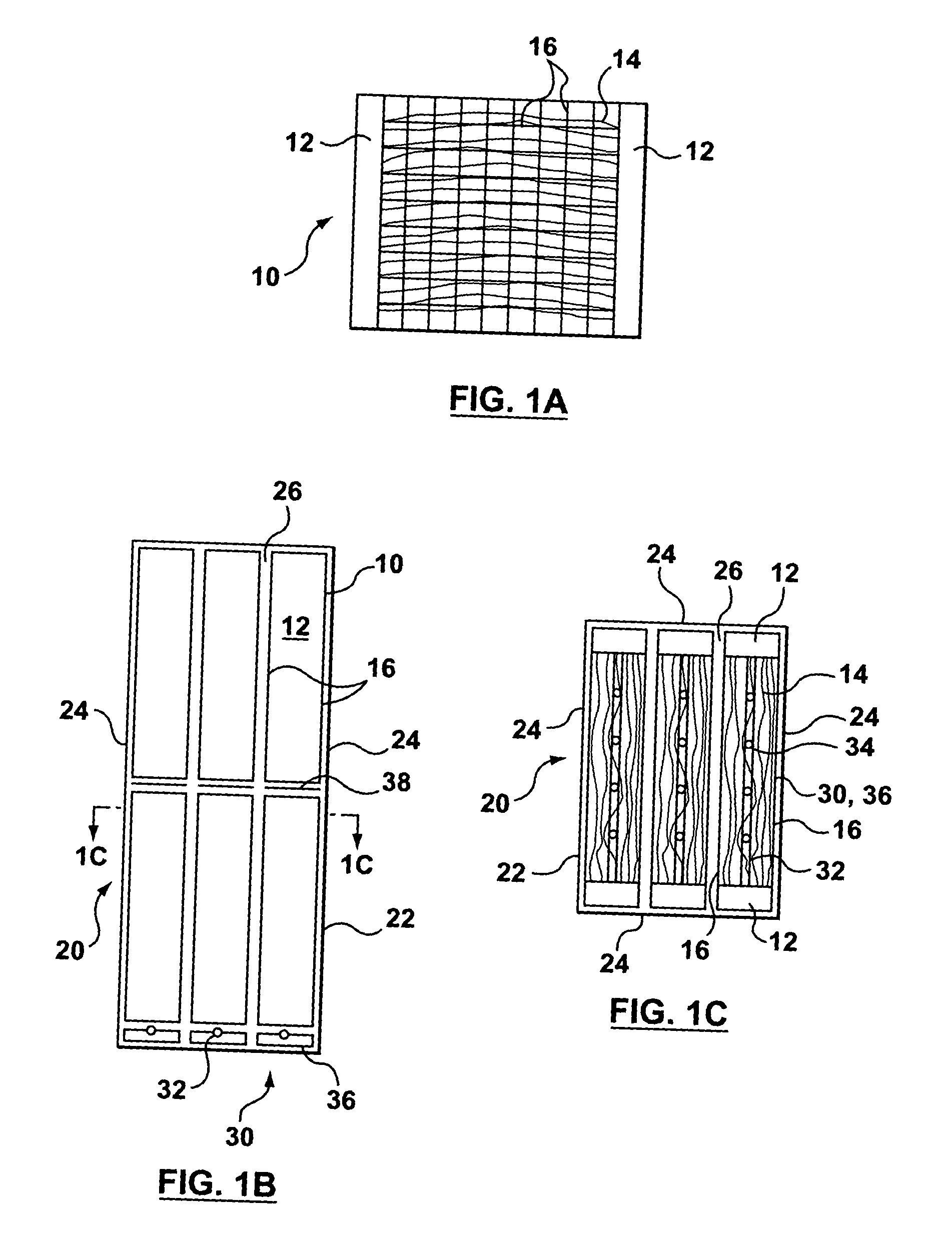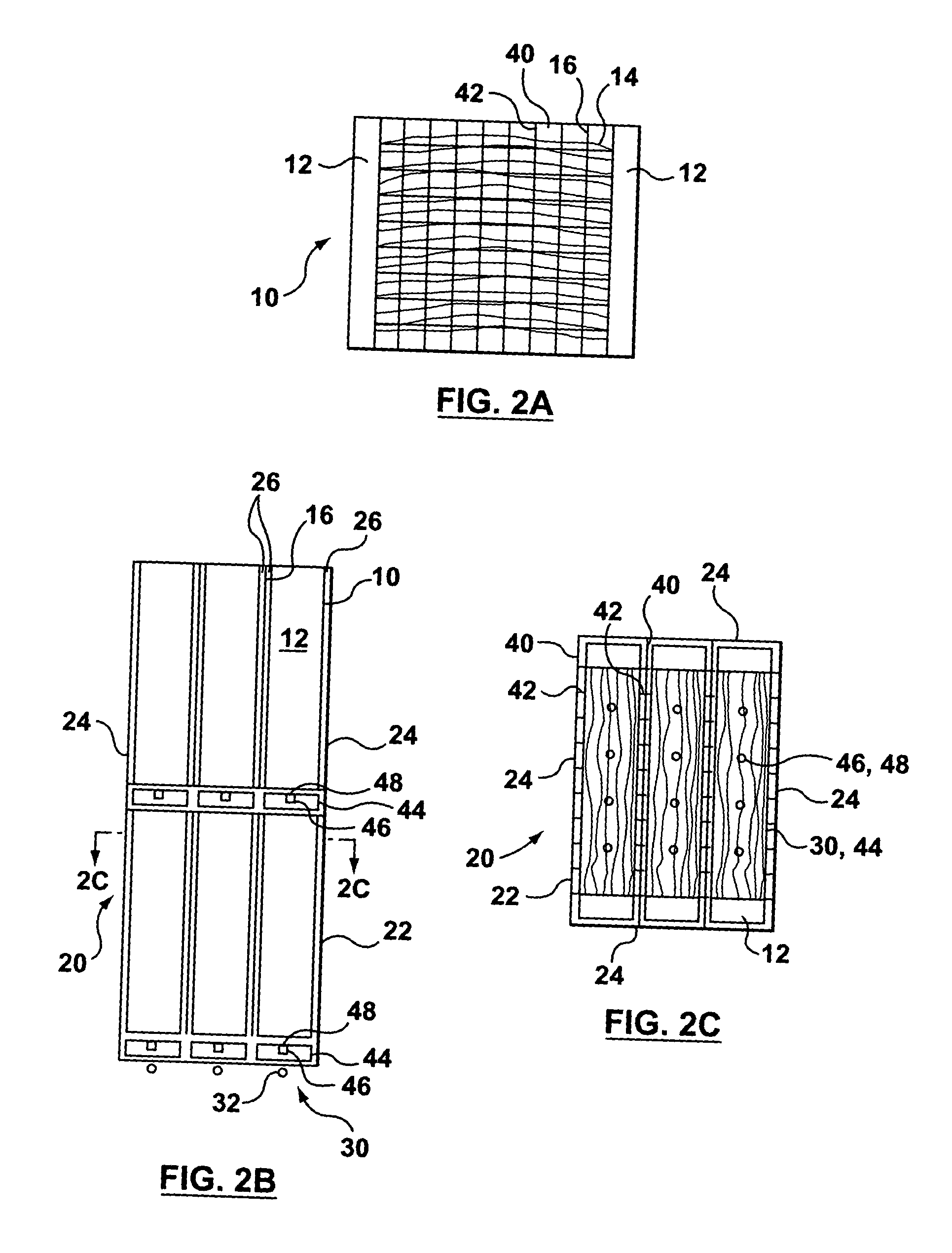Tri-axial membrane filtration device and process
a technology of membrane filtration and tri-axial membrane, which is applied in the direction of membrane technology, membrane technology, chemistry apparatus and processes, etc., can solve the problems of reducing the effectiveness of the flow, affecting the flow efficiency of the flow, so as to reduce the number of hollow fibers, and reduce the air scouring
- Summary
- Abstract
- Description
- Claims
- Application Information
AI Technical Summary
Benefits of technology
Problems solved by technology
Method used
Image
Examples
Embodiment Construction
[0024]FIGS. 1A, 1B, and 1C show a first embodiment. An element 10 has a pair of vertically oriented headers 12. The headers 12 are generally parallel to each other and horizontally spaced apart. One or both headers 12 may have permeate channels communicating with the lumens of hollow fiber membranes 14 spanning between the headers. A pair of shrouds 16 also extend between the headers 12 and define a fiber area bounded by the inside surfaces of the headers 12 and shrouds 16. The fiber area is open at the top and bottom to permit water to flow vertically through it. The fibers 14 are mounted in a slackened state but the shrouds 16 prevent them from leaving the fiber area. The shrouds 16 are made of a plastic mesh, however, and so water can move horizontally through the shrouds 16.
[0025] In a module 20, the elements 10 are stacked on top of each other, for example in stack 1 to 4 elements 10 high, with the fiber areas vertically aligned. Multiple stacks of elements 10 are placed side ...
PUM
 Login to View More
Login to View More Abstract
Description
Claims
Application Information
 Login to View More
Login to View More - R&D
- Intellectual Property
- Life Sciences
- Materials
- Tech Scout
- Unparalleled Data Quality
- Higher Quality Content
- 60% Fewer Hallucinations
Browse by: Latest US Patents, China's latest patents, Technical Efficacy Thesaurus, Application Domain, Technology Topic, Popular Technical Reports.
© 2025 PatSnap. All rights reserved.Legal|Privacy policy|Modern Slavery Act Transparency Statement|Sitemap|About US| Contact US: help@patsnap.com



